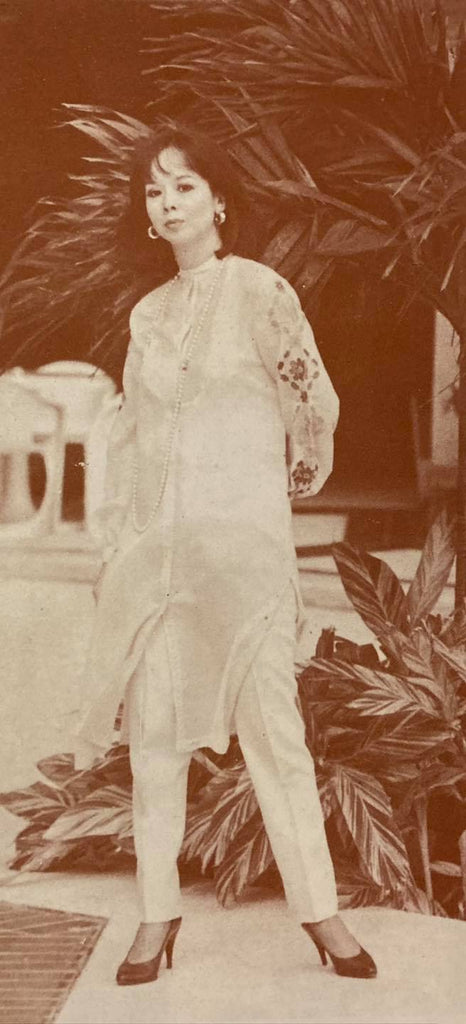Custom Barong Tagalog Can Be Fun For Everyone
Table of ContentsThe Greatest Guide To Barong TagalogFacts About Barong Tagalog For Sale UncoveredBarong Tagalog For Sale Can Be Fun For Anyone

It contains the enclitic suffix -ng which suggests that it is modified by or changes the next word. The origin word of barong is the Tagalog word baro, implying "clothing" or "clothes". The term is typically not utilized. "barong tagalog" literally equates to "Tagalog attire", the "tagalog" in the name does not mean that it was a form of gown unique to the Tagalog people, as opposed to various other Philippine ethnic groups.
Instead, the name was created to identify the gown as indigenous (thus "tagalog", i. e. ), instead of the styles of gown of Europeans as well as other international societies. Summary [modify] Barong tagalog put on with a salakot. The female is wearing a. Barong tagalog is a formal t-shirt typically made of sheer light-weight but stiff material referred to as (typically woven from pia or abac fibers).
The term camisa de chino is additionally utilized for collar-less as well as cuff-less tee shirts, named after its similarity to shirts worn by Chinese workers. It is used with belted trousers and also outfit footwear. Headwear, when worn, is either a salakot or a buntal hat (as well as historically additionally stovepipe hats or bowler hats). Barong tagalog can differ considerably in regards to style as well as material used, but they share typical features of having long sleeves, embroidery, being buttoned (midway or straight down the upper body), and the lack of pockets. They are likewise worn loosely and have slits on both sides. Historically, the product made use of for barong tagalog relied on the social course of the wearer as well as the formality of the occasion.
The 4-Minute Rule for Where To Buy Barong Tagalog In Usa

The high quality of the product as well as the complexity of the embroidery were typically signs of the status as well as riches of the wearer. The needlework of the barong tagalog are frequently put on a rectangle-shaped section on the front of the breast (called pechera, "tee shirt front", from Spanish pecho, "chest"), and/or over the whole shirt (sabog, from Tagalog for "scattered"). i loved this.
History [edit] Pre-colonial age [edit] The barong tagalog originated from the Tagalog baro (essentially "t shirt" or "garments", additionally referred to as bar or bay in other Philippine languages), a straightforward collar-less t shirt or jacket with close-fitting lengthy sleeves put on by both males and females in the majority of ethnic groups in the pre-colonial Philippines. These were made from rough linen-like towel woven from native abac fiber, or from imported materials woven from silk, cotton, as well as kapok, amongst others. Amongst Tagalog guys, they were generally combined with a rectangular shape of highly embellished towel called the salaual or salawal used knee-length and drawn up in the center (like an Indian or Thai and also Cambodian ); while in women they were coupled with a wraparound skirt called the.
However, in the Visayas, besides similar baro (which had shorter sleeves) as well as salaual mixes, males additionally used colorful robe-like and coat-like versions that can include well below the knees (understood as the marlota as well as baquero in Spanish, specifically). These were in some cases belted at the waist. Amongst Tagalogs, red dyes and also gold trimmings were indicative of being a participant of nobility () or the warrior caste () - this hyperlink.

Little Known Facts About Barong Tagalog Dress.
The couturier Jose "Pitoy" Moreno has actually assumed that this transitional style of t shirt was the camisa de chino of later centuries, which makes it a precursor to the barong tagalog. Depictions of members of the upper classes (including citizens and) in the 18th century revealed that they invariably put on European-style garments. i was reading this.
These were a lot longer than the modern barong tagalog, getting to down to somewhat over the knees. They were additionally typically candy striped with strong shades like blue, red, or environment-friendly. However, they already presented characteristics of the modern barong tagalog, including being constructed from large nipis product, needlework, long sleeves, and a loose silhouette with slits on both sides - explanation.
Early examples of barong mahaba typically had high-standing collars or even Elizabethan-style ruffs with slim cravats. Barong mahaba were usually used with colorful straight-cut trousers with red stripes, checkers, or plaid-like patterns (normally made from imported cambaya, rayadillo, and guingn fabrics), stovepipe hats (sombrero de copa), as well as a kind of embroidered velvet or natural their website leather slip-on shoes called corchos. The sheer fabric made use of by barong mahaba likewise necessitated the putting on of an undershirt, referred to as camisn or camiseta, which was additionally endured its very own by citizens. By the 1840s, barong mahaba largely befalled of fashion. In this period, it advanced into the modern-day "traditional" barong tagalog, being much shorter with much less extravagant folded up collars, while still keeping the large textile and other baro qualities.